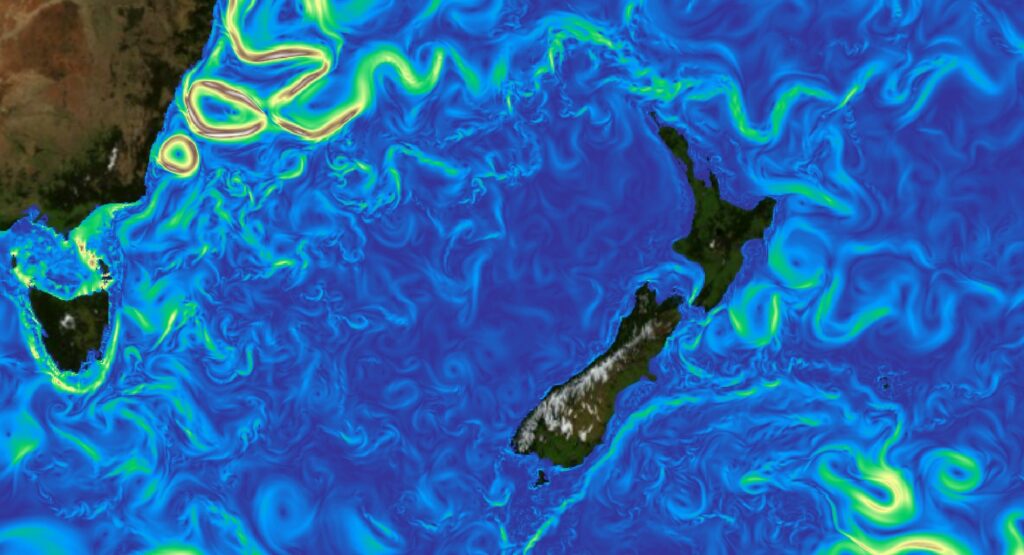- AUTHORMajor ocean modelling effort leads to better climate simulations
- July 20 2020
Major ocean modelling effort leads to better climate simulations

The significant effort to develop and run New Zealand’s own Earth System Model (NZESM), within the Deep South Challenge: Changing with our Climate, is leading to more realistic climate simulations for New Zealand.
The major step forward is described in a paper recently published in the Journal of Advances in Earth System Modelling, co-authored by Erik Behrens and Olaf Morgenstern (both of NIWA).
Lead author and ocean modeller Erik Behrens explains how the oceans around New Zealand have to-date been poorly represented in global climate models. “Our unique oceanic currents and conditions have a major impact on the climate in our region,” he says, “and unless we capture these processes well in our climate models, we can’t fully trust our future climate projections.”
Our unique oceanic currents and conditions have a major impact on the climate in our region, and unless we capture these processes well in our climate models, we can’t fully trust our future climate projections.
“The key here is to resolve small-scale oceanic processes, such as oceanic eddies,” continues Behrens. “The oceans around New Zealand are full of these eddies.” Oceanic currents in the real world don’t flow smoothly, like in a Disney Pixar animation. They’re more like rivers with sections of wild rapids, which create small-scale eddies.
“There’s a hotspot of eddies along the Australian coast – within the East Australian Current,” Behrens explains. “South of about Sydney, this current becomes unstable and generates very intense eddies. Some of these eddies form the Tasman Front, which carries warm water towards New Zealand, while others transport water into the Tasman Sea. Small-scale eddies dominate the transport of heat throughout the ocean, and drive mixing in the ocean (including of nutrient supplies). Both ocean heat and ocean biology play a major role in climate and climate change.
Behrens, Morgenstern and others have been able to “tweak” the ocean model component of the NZ’s earth system model. The results show improved simulations of New Zealand’s present-day ocean temperatures, salinity and currents, and therefore of our ocean bio-geochemistry. Our New Zealand Earth System Model (NZESM), which builds on the UK Earth System Model (UKESM), also does a better job of simulating oceanic climate extremes in our region, such as marine heatwaves.
Last year (2019) saw marine heatwaves of 6°C above average. The UKESM underestimated these heatwaves by roughly 1°C. In general, it simulates milder ‘extremes’ and colder oceans around New Zealand than in the real world.
Small-scale eddies also influence large-scale ocean circulation, such as ocean gyres and the strong currents in the Southern Ocean. These large ocean currents transfer heat to the air, impacting our Southern Hemisphere climate.
We clearly need to be able to accurately model how these processes are changing over time, in order to prepare for our climate future. With the NZESM capturing present-day conditions around New Zealand better than our UK counterpart, we can have more confidence in our future predictions.
The results of this study have been published in the Journal of Advances in Earth System Modelling, as “Local Grid Refinement in New Zealand’s Earth System Model: Tasman Sea Ocean Circulation Improvements and Super-Gyre Circulation Implications”.